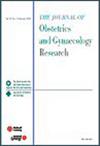Pregnancy outcomes in women with different endometriosis lesion types: A review of current evidence
Abstract
Background
Endometriosis, affecting ~10% of women of reproductive age, is associated with infertility and adverse pregnancy outcomes. The condition is classified into superficial peritoneal endometriosis (SUP), ovarian endometriomas (OMA), and deep infiltrating endometriosis (DIE), with varying impacts on pregnancy. This review examines the relationship between lesion subtypes and adverse maternal–fetal outcomes.
Methods
A comprehensive literature search was conducted using PubMed, Scopus, Google Scholar, and Web of Science. Studies published between 2014 and 2025 that investigated pregnancy outcomes in women with endometriosis were included. Articles were screened based on predefined inclusion criteria, with 10 studies meeting the final selection. Outcomes analyzed included placenta previa, preterm birth, stillbirth, pre-eclampsia, intrauterine growth restriction (IUGR), and miscarriage.
Results
Women with endometriosis exhibited a significantly higher risk of placenta previa, particularly those with Stages III–IV disease (p < 0.05) and deep infiltrating lesions (p < 0.05). The risk was further elevated in pregnancies conceived via assisted reproductive technologies (ART) (p = 0.01). The likelihood of preterm birth was higher in patients with bladder DIE (p = 0.02) and rectal DIE (p = 0.01), but not in those with ovarian endometriomas. Meta-analysis data indicated a moderate association between endometriosis and pre-eclampsia (p < 0.05), particularly in patients with deep lesions (p = 0.03). Stillbirth risk showed inconsistent findings, with some studies reporting an increased risk (p < 0.05) while others found no significant association. IUGR and small-for-gestational-age (SGA) infants were more common in women with DIE (p = 0.03) and advanced-stage disease (p = 0.05). Miscarriage risk was elevated in patients with superficial endometriosis (p < 0.05) compared with those with DIE or OMA.
Conclusion
Endometriosis, particularly ovarian and deep infiltrating, significantly increases the risk of placenta previa, preterm birth, IUGR, and miscarriage. ART conception further amplifies these risks. While conflicting evidence exists for stillbirth and pre-eclampsia, lesion-specific trends suggest a need for individualized obstetric management. Larger studies are required to clarify these associations and optimize pregnancy care for affected women.

 求助内容:
求助内容: 应助结果提醒方式:
应助结果提醒方式:


